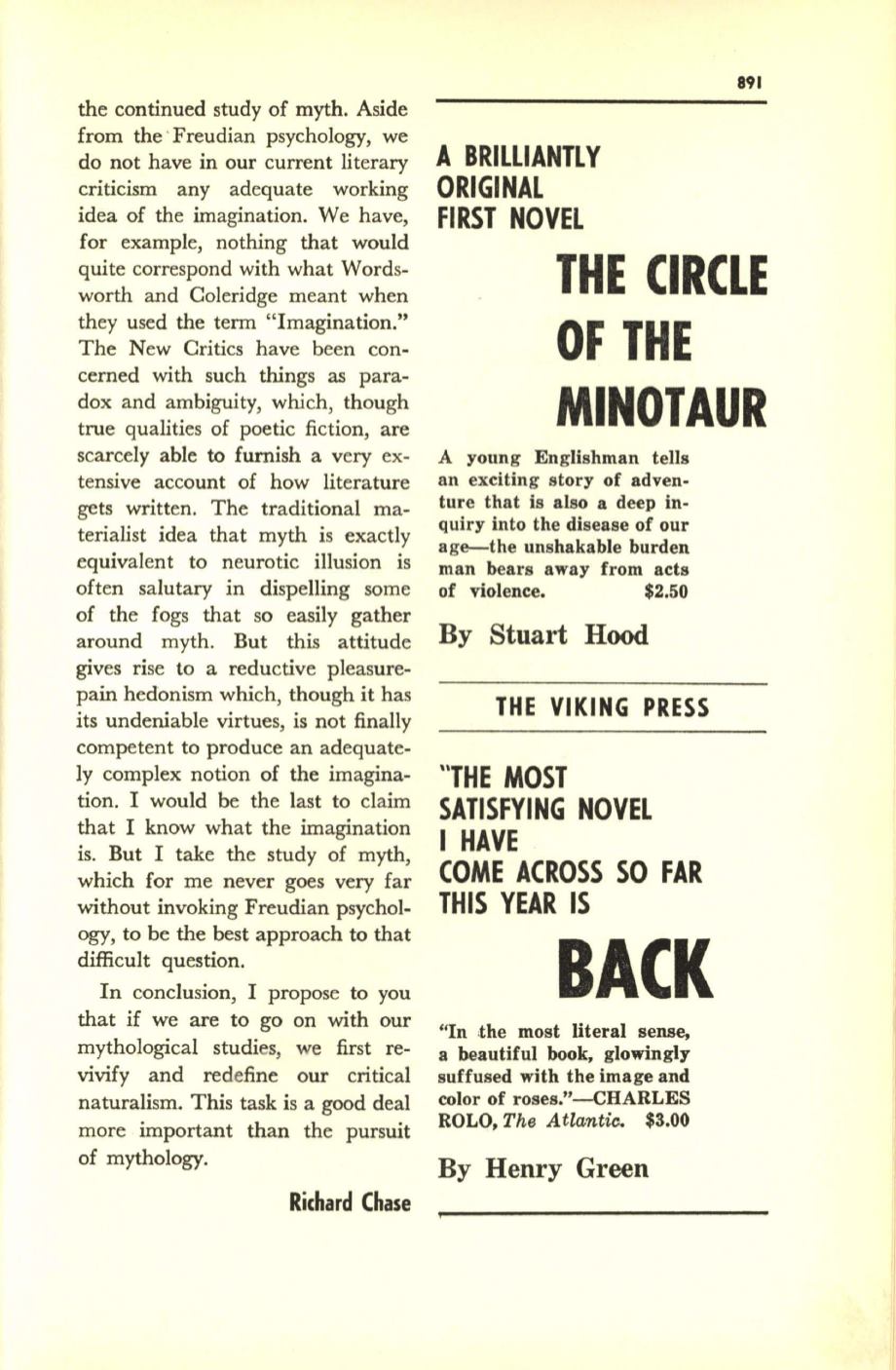
the continued study of myth. Aside
from the ' Freudian psychology, we
do not have in our current literary
criticism any adequate working
idea of the imagination. We have,
for example, nothing that would
quite correspond with what Words–
worth and Coleridge meant when
they used the term "Imagination."
The New Critics have been con–
cerned with such things as para–
dox and ambiguity, which, though
true qualities of poetic fiction, are
scarcely able to furnish a very ex–
tensive account of how literature
gets written. The traditional ma–
terialist idea that myth is exactly
equivalent to neurotic illusion is
often salutary in dispelling some
of the fogs that so easily gather
around myth. But this attitude
gives rise to a reductive pleasure–
pain hedonism which, though it has
its undeniable virtues, is not finally
competent to produce an adequate–
ly complex notion of the imagina–
tion. I would be the last to claim
that I know what the imagination
is. But I take the study of myth,
which for me never goes very far
without invoking Freudian psychol–
ogy, to be the best approach
to
that
difficult question.
In conclusion, I propose to you
that if we are to go on with our
mythological studies, we first re–
vivify and redefine our critical
naturalism. This task is a good deal
more important than the pursuit
of mythology.
Richard Chase
A BRILLIANTLY
ORIGINAL
FIRST NOVEL
891
THE CIRCLE
OF THE
MINOTAUR
A young Englishman tells
an exciting story of adven–
ture that is also a deep in–
quiry into the disease of our
age-the unshakable burden
man bears away from acts
of violence.
$2.50
By Stuart Hood
THE VIKING PRESS
"THE MOST
SATISFYING NOVEL
I HAVE
COME ACROSS SO FAR
THIS YEAR IS
BACK
"In .the most literal sense,
a beautiful book, glowingly
suffused with the image and
color of roses."-CHARLES
ROLO,
The Atlantic. $3.00
By Henry Green


